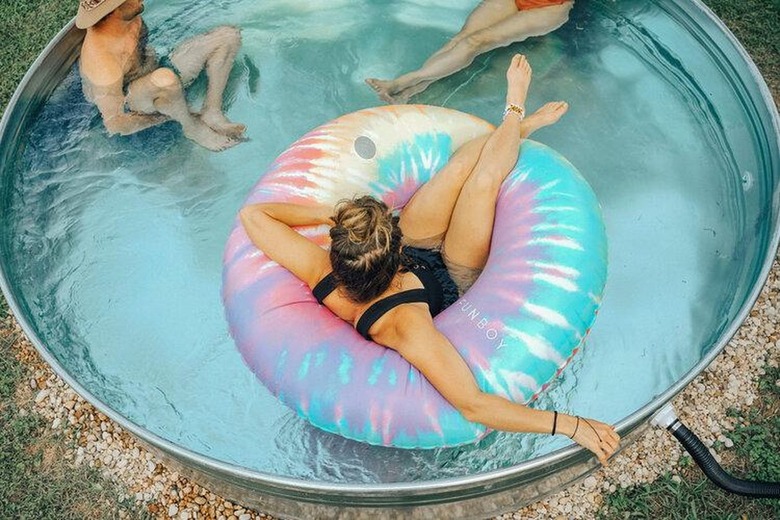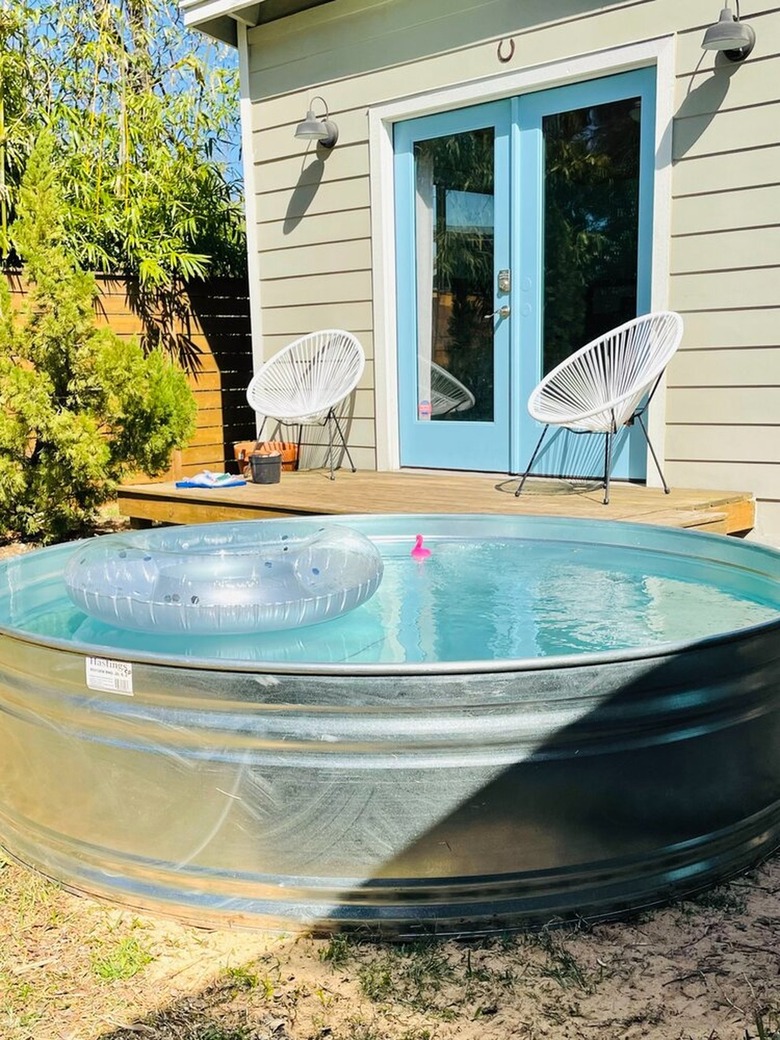6 Cons Of Stock Tank Pools, Before You Take The Plunge
Ahhh, is there anything more refreshing than taking a dip in a pool on a hot summer's day? Unfortunately, pools are pretty costly, both in installation and maintenance. But don't worry! There's a workaround.
Meet the humble stock tank pool, which is essentially an oversized metal or plastic trough used to provide farm animals with drinking water. Trust us, they can be dressed up to look way better than they sound.
But the whole process is not as simple as buying a stock tank and filling it up with water to create a private swimming hole. Here are six stock tank pool cons to consider before you build your own, as well as a few solutions to overcome them, if possible.
1. Stock tank pools are small and shallow compared to regular pools.
1. Stock tank pools are small and shallow compared to regular pools.
Don't expect to actually swim in a stock tank pool, unless you're a toddler! They are usually less than 10 feet in diameter, and only two or three feet deep. So while you can splash around or soak, there will be no actual swimming here. There's not really much you can do to combat this — that's just the nature of stock tank pools.
2. The water can get a little too warm, a little too fast.
2. The water can get a little too warm, a little too fast.
"If the pool is left in direct sun, the water will get warm and will not be as refreshing as a pool that is shaded," Aaron Weiss, co-owner of stock tank pool company Cowboy Pools, tells Hunker. And grossly warm water defeats the whole purpose! To prevent this, install your pool in a shady part of your yard, or create your own shade with an awning or umbrella.
3. Stock tank pools require filtration systems, otherwise you'll end up with mosquitoes and algae.
3. Stock tank pools require filtration systems, otherwise you'll end up with mosquitoes and algae.
Like their in-ground cousins, stock tank pools come with a fair bit of maintenance, particularly when it comes to the water inside them — it's not like a kiddie pool that you fill and empty with every use. To prevent a slimy build-up of algae, and to circulate the water so mosquitoes don't lay eggs there, you'll want to install a pool filter to keep things clean and moving. It can be a lot of work for a tiny pool, so you'll have to decide whether or not it's worth the payoff.
4. They can rust if you're not careful.
4. They can rust if you're not careful.
As you probably know from science class back in the day, water + metal = rust. While metal stock tank pools will rust over time on their own, dropping in chlorine tablets can speed up the process. Make sure you use a chlorine float to disperse the chemicals slowly. Or you could opt for a plastic stock tank to avoid rust entirely.
5. Metal stock tank pools can burst if they're low quality.
5. Metal stock tank pools can burst if they're low quality.
One day you might wake up to find your backyard flooded from a ruptured stock tank pool. "While all of them will provide respite from the heat, they are not all created equally," Lauren Attal, co-owner of stock tank pool company Sister Stocks & Co., tells Hunker. "Many tanks use thinner metal, which is prone to puncture and creates less reliable seams. The best tanks on the market use 22–20G steel and will provide you the best long-term bang for your buck."
6. You might need a permit to install them.
6. You might need a permit to install them.
Depending on where you live, your municipality might have building codes that need to be followed when building a stock tank pool, and it might even require you to get a permit for construction. Do your research ahead of time, or you could end up getting fined for breaking the law.

